- Understanding Yellowing of Petunias and Alyssum After Pruning
- 1. Stress from Pruning
- 2. Nutrient Deficiencies
- 3. Improper Pruning Techniques
- 4. Watering Issues
- 5. Disease or Pest Infestation
- How to Address Yellowing
- Pruning Techniques for Petunias and Alyssum
- 1. Timing
- 2. Tools
- 3. Technique
- 4. Pruning Frequenxy
- Impact of Pruning on Petunias and Alyssum
- Causes of Yellowing
- Solutions
- The Role of Sunlight in Yellowing
- Nutrient Deficiencies that May Cause Yellowing
- Overwatering and Yellowing
- Pests and Diseases as Potential Causes
- Insect Infestation
- Fungal Infections
- Root Rot
- Nutrient Deficiencies
- Environmental Stress
- Preventive Measures for Yellowing
- Tips for Proper Pruning and Yellowing Prevention
- Questions and Answers:
- Why do petunias and alyssum turn yellow after pruning?
- How can over-pruning lead to yellowing of petunias and alyssum?
- What can happen if the pruning technique is improper?
- Can lack of sunlight cause petunias and alyssum to turn yellow after pruning?
- How can I prevent or treat yellowing of petunias and alyssum after pruning?
- Videos: How To Keep Your Petunias Full And Flowering | Pruning Petunias For Beginners
Pruning is an important part of plant care, helping to maintain the health and shape of plants. However, in the case of petunias and alyssum, pruning can sometimes lead to the plants turning yellow. This can be frustrating for gardeners who want their plants to thrive and remain vibrant. In this article, we will explore the causes behind this yellowing phenomenon and provide some helpful solutions.
One possible cause of yellowing after pruning is shock. When plants are pruned, they undergo a certain amount of stress as their growth patterns are disrupted. This stress can lead to a temporary yellowing of the foliage as the plant adjusts to its new state. Another cause may be a lack of nutrients. Pruning removes a portion of the plant, reducing its ability to photosynthesize and obtain the necessary nutrients for healthy growth. This can result in yellowing as the plant struggles to meet its nutritional needs.
Additionally, petunias and alyssum are both susceptible to certain diseases and pests that can cause yellowing. For example, fungal infections or infestations of aphids or spider mites can lead to leaf yellowing and other symptoms. It is important to monitor plants for any signs of disease or pests and take appropriate action to address the issue.
To prevent or alleviate yellowing after pruning, there are several steps gardeners can take. First, it is important to provide proper care and maintenance for the plants, including regular watering, fertilization, and pest control. This will help ensure that the plants have the necessary nutrients and are not being negatively impacted by diseases or pests. Additionally, when pruning, it is important to use clean and sharp tools to minimize stress on the plants. Lastly, gradually reduce the amount of foliage removed during pruning to minimize shock and allow the plants to adjust more easily.
In conclusion, yellowing after pruning petunias and alyssum can be caused by shock, a lack of nutrients, or diseases and pests. By understanding these causes and implementing appropriate solutions, gardeners can help their plants stay healthy and vibrant after pruning.
Understanding Yellowing of Petunias and Alyssum After Pruning
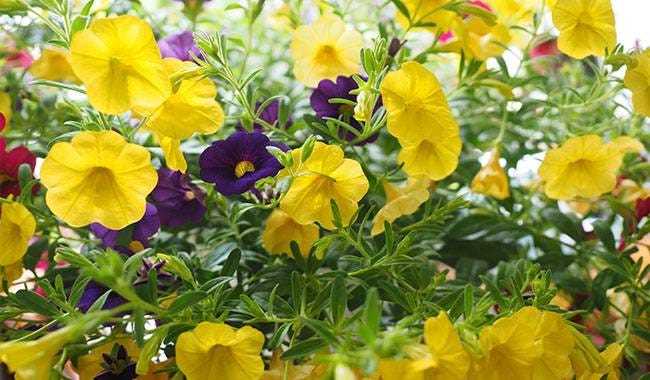
When petunias and alyssum turn yellow after pruning, it can be a cause for concern. Understanding the reasons behind this yellowing can help you address the issue effectively and ensure the continued health of your plants.
1. Stress from Pruning
One of the primary causes of yellowing in petunias and alyssum after pruning is the stress caused to the plants during the trimming process. Pruning removes a significant portion of the plant’s foliage and disrupts its natural growth patterns. This stress can trigger a response in the plants’ physiology, leading to yellowing of the leaves.
2. Nutrient Deficiencies
Yellowing of petunias and alyssum can also be a result of nutrient deficiencies in the soil. When you prune these plants, they require extra energy to initiate new growth, which can put a strain on their nutrient supply. Lack of essential nutrients like nitrogen, iron, or magnesium can lead to yellowing of the leaves.
3. Improper Pruning Techniques
Using improper pruning techniques can also contribute to the yellowing of petunias and alyssum. Cutting too much foliage or cutting too close to the main stem can shock the plants and result in yellowing. It is important to use clean, sharp tools and make clean cuts at the appropriate angles to minimize stress on the plants.
4. Watering Issues
Inadequate or excessive watering can also lead to yellowing of petunias and alyssum after pruning. Overwatering can cause root rot and limit the plant’s ability to absorb nutrients, leading to yellow leaves. Underwatering, on the other hand, can cause stress to the plants, resulting in yellowing as a defense mechanism.
5. Disease or Pest Infestation
In some cases, yellowing of petunias and alyssum after pruning may be a sign of a disease or pest infestation. Certain diseases, like fungal infections, or pests, like aphids or spider mites, can weaken the plants and cause yellowing of the leaves. It is important to regularly inspect your plants for any signs of disease or pests and take appropriate measures to control them.
How to Address Yellowing
To address yellowing of petunias and alyssum after pruning, you can take the following steps:
- Ensure you are using proper pruning techniques, making clean cuts and avoiding excessive removal of foliage.
- Provide balanced nutrition to your plants by using a suitable fertilizer and addressing any nutrient deficiencies identified through soil testing.
- Adjust your watering practices to ensure your plants receive an adequate amount of water without over- or underwatering.
- Regularly inspect your plants for signs of disease or pest infestation and take appropriate measures, such as using organic insecticides or fungicides.
By addressing the underlying causes and providing proper care, you can prevent and resolve the yellowing of petunias and alyssum after pruning, allowing them to thrive and continue beautifying your garden.
Pruning Techniques for Petunias and Alyssum

Pruning is an important practice for maintaining the health and appearance of petunias and alyssum. However, if not done properly, it can cause these plants to turn yellow. Understanding the proper pruning techniques can help prevent this issue and promote the growth of vibrant and healthy plants.
1. Timing
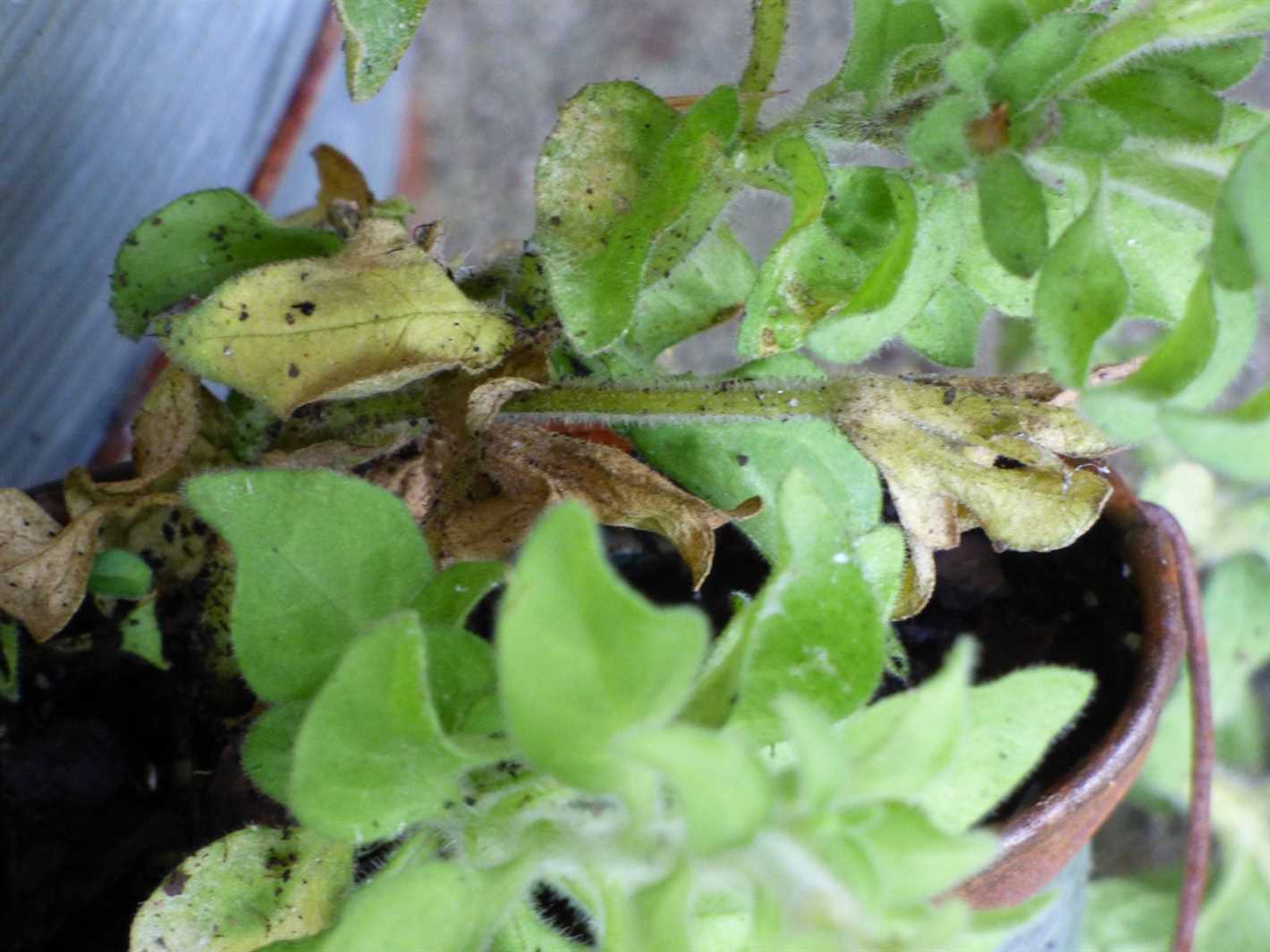
Pruning should be done at the right time to avoid causing stress to the plants. Both petunias and alyssum should be pruned after they have finished blooming. This allows them to recover and grow new foliage before the next blooming season. Late fall or early spring is generally the best time for pruning these plants.
2. Tools
Using the right tools is essential for effective pruning. Sharp and clean pruning shears or scissors should be used to make clean cuts and minimize the risk of infection. Dull or dirty tools can damage the plants and increase the chances of yellowing.
3. Technique
When pruning petunias and alyssum, it is important to remove the dead or dying flowers, stems, and leaves. This helps improve the overall appearance of the plants and prevents the formation of seed pods, which can divert energy away from new growth.
For petunias, pinch off the fading flowers just above a leaf node to encourage branching and promote new flower growth. Remove any leggy or overcrowded stems to maintain a compact and bushy shape.
For alyssum, trim back the entire plant to a few inches above the ground level. This encourages new growth and prevents the plants from becoming straggly. Avoid cutting into the woody parts of the stems as this can inhibit growth.
4. Pruning Frequenxy
Regular pruning helps keep petunias and alyssum tidy and encourages continuous blooming. It is recommended to prune petunias every 2-3 weeks during the growing season to promote new growth and keep the plants looking full and compact. Alyssum can be pruned less frequently, about once every 4-6 weeks, to maintain its shape and blooming vigor.
Remember to always monitor the plants after pruning and adjust your technique and frequency based on their response. If yellowing still occurs after pruning, there may be other underlying issues such as nutrient deficiencies or pests that need to be addressed.
By following these pruning techniques, you can help keep your petunias and alyssum healthy, vibrant, and free from yellowing.
Impact of Pruning on Petunias and Alyssum
Pruning is a common practice in gardening and can have both positive and negative effects on plants. Petunias and alyssum are two popular flowering plants that are often pruned to promote better growth and blooming. However, pruning can sometimes cause these plants to turn yellow, indicating a problem.
Causes of Yellowing
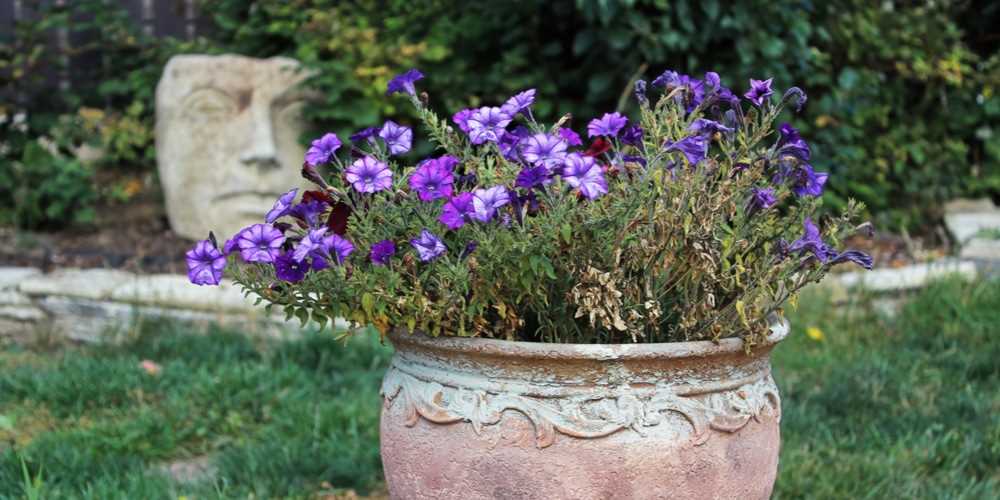
- Stress: Pruning can be a stressful experience for plants, especially if it is done incorrectly or at the wrong time. This stress can lead to a temporary yellowing of leaves as the plants adjust to the changes.
- Improper technique: If pruning is done with blunt or dirty tools, it can cause damage to the plants and leave them vulnerable to infections. When infections occur, the plants may yellow as a defense mechanism.
- Over-pruning: Too much pruning, especially in a short period of time, can weaken the plants and hinder their ability to produce energy through photosynthesis. This can result in yellowing of leaves.
- Nutrient deficiencies: Pruning can increase the nutrient requirements of plants, and if the necessary nutrients are not supplied, the plants may develop nutrient deficiencies, leading to yellowing.
Solutions
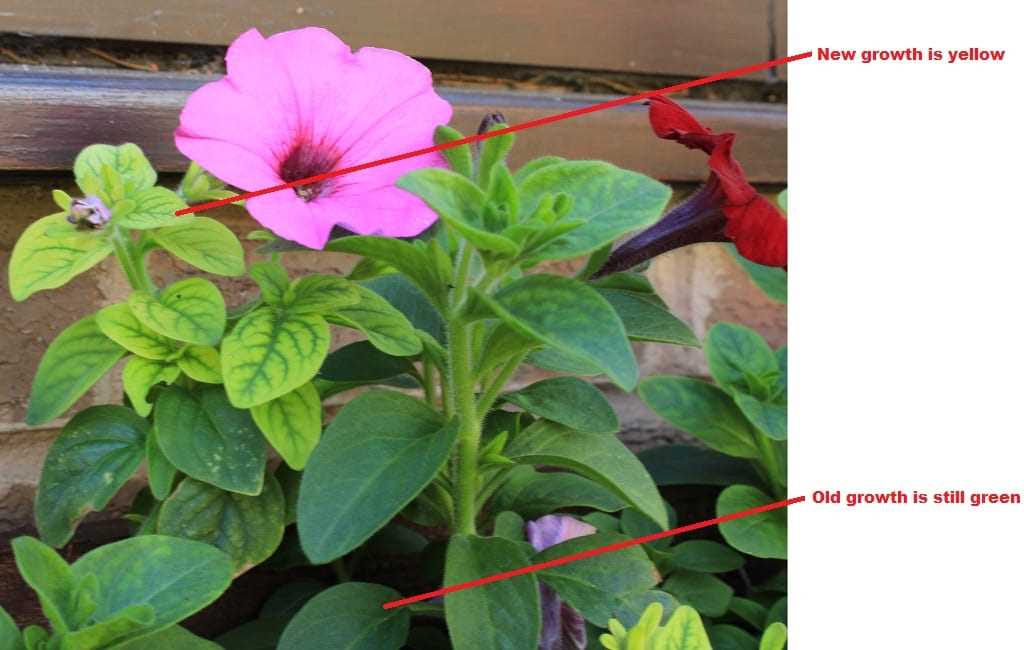
To minimize the negative impact of pruning on petunias and alyssum, it is important to follow proper pruning techniques and provide the necessary care:
- Use clean and sharp pruning tools to avoid damage and infections.
- Prune during the appropriate time for each plant species, taking into account their specific growth habits.
- Avoid excessive pruning, especially in a short period of time.
- Ensure that plants receive adequate sunlight, water, and nutrients to support their growth and recover from the stress of pruning.
- Monitor the plants closely after pruning for any signs of yellowing or other issues, and take immediate action if necessary.
By following these guidelines, gardeners can minimize the negative impact of pruning on petunias and alyssum and help ensure healthy and vibrant plants.
The Role of Sunlight in Yellowing
One of the main reasons why petunias and alyssum turn yellow after pruning is due to the role of sunlight in their growth and development. Sunlight plays a crucial role in providing energy for photosynthesis, which is the process that plants use to convert light into food.
When petunias and alyssum are pruned, they often lose a significant portion of their foliage. This reduction in foliage can result in a decrease in the overall surface area available for photosynthesis. As a result, the plants may not be able to produce enough energy to support their growth and maintain their green color.
In addition to the decrease in foliage, pruning can also expose previously shaded parts of the plants to direct sunlight. These shaded areas may not be accustomed to receiving intense sunlight, and the sudden exposure can cause sunburn. Sunburn damages the plant cells and disrupts their normal functioning, leading to yellowing of the leaves.
Furthermore, excessive sunlight exposure can also increase the temperature around the plants. High temperatures can accelerate the transpiration rate, which is the process of water loss through the leaves. When petunias and alyssum lose water faster than they can absorb it, they can become dehydrated, resulting in yellowing and wilting.
To mitigate the effects of sunlight on yellowing after pruning, it is important to take certain measures. Providing partial shade to the plants during the hottest hours of the day can help protect them from intense sunlight and minimize the risk of sunburn. Additionally, ensuring that the plants receive adequate water and nutrients can help prevent dehydration and maintain their overall health and green color.
In conclusion, sunlight plays a significant role in the yellowing of petunias and alyssum after pruning. The decrease in foliage, exposure to intense sunlight, and increased temperature can all contribute to the yellowing of the leaves. By providing partial shade and proper care, it is possible to prevent or minimize the yellowing and maintain the plants’ health and vibrancy.
Nutrient Deficiencies that May Cause Yellowing
Yellowing of petunias and alyssum after pruning could be caused by various nutrient deficiencies. Here are some common deficiencies that may lead to yellowing:
Nitrogen deficiency: Nitrogen is an essential nutrient for plant growth and development. Its deficiency can result in overall yellowing of leaves. To address nitrogen deficiency, it is important to provide sufficient nitrogen fertilizers or organic matter to the soil.
Iron deficiency: Iron is necessary for chlorophyll production and photosynthesis. When plants lack iron, the leaves can turn yellow. To alleviate iron deficiency, applying iron chelates or iron sulfate to the soil can help.
Potassium deficiency: Potassium is vital for various plant functions, including nutrient uptake and water regulation. Lack of potassium may cause yellowing and browning of the leaf margins. To combat potassium deficiency, using potassium-rich fertilizers or adding compost to the soil can be beneficial.
Magnesium deficiency: Magnesium plays a crucial role in chlorophyll formation and other metabolic processes. Its deficiency can lead to yellowing between the veins of leaves. To address magnesium deficiency, applying magnesium sulfate or Epsom salts is recommended.
Zinc deficiency: Zinc is necessary for various plant enzymes and hormone regulation. When plants lack zinc, new leaves may turn yellow. To tackle zinc deficiency, using zinc fertilizers or foliar sprays can be helpful.
It is important to note that nutrient deficiencies can be diagnosed through soil testing and leaf analysis. Understanding the specific nutrient needs of petunias and alyssum can help prevent yellowing after pruning and ensure healthy plant growth.
Overwatering and Yellowing
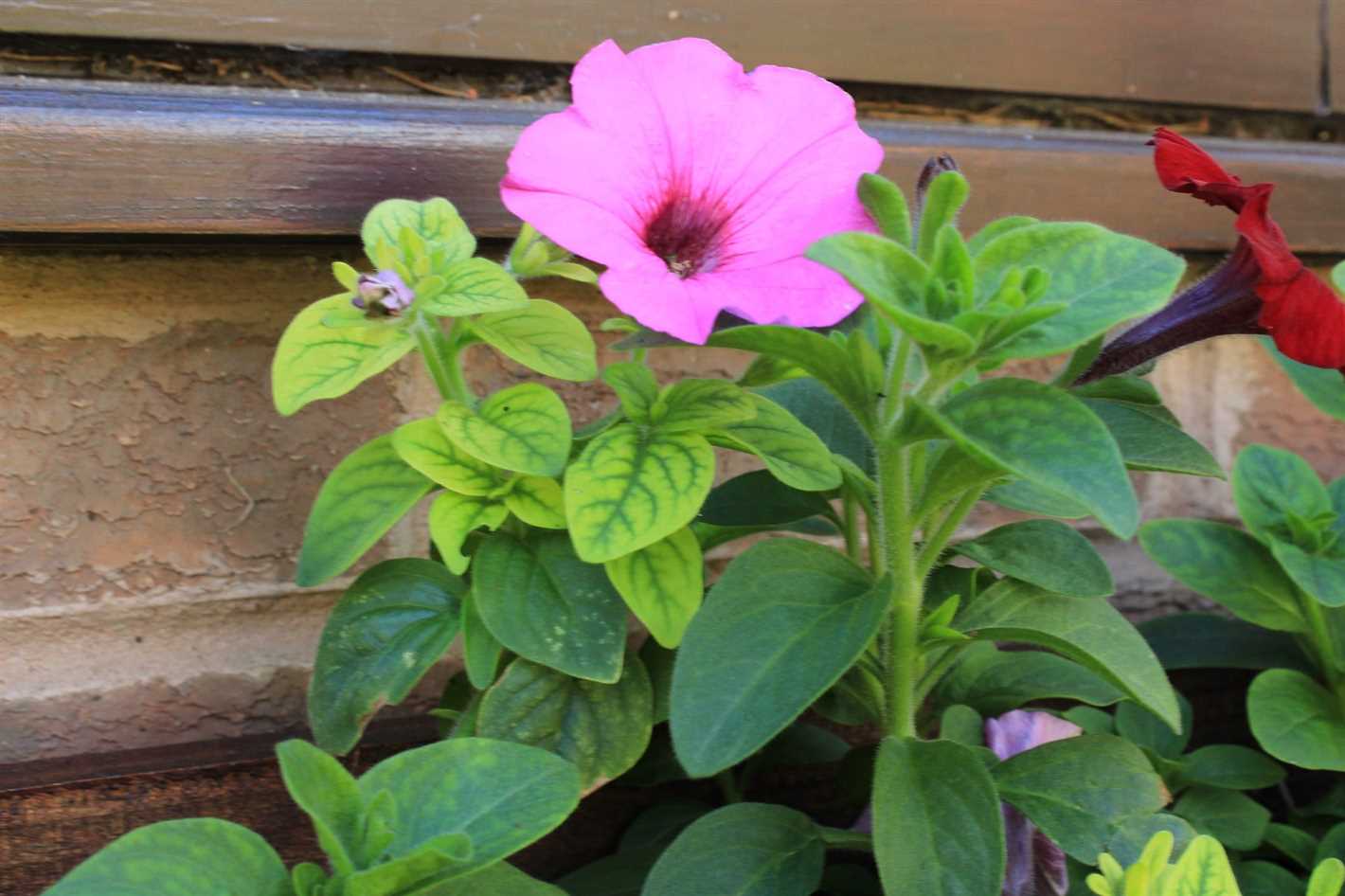
Overwatering is one of the common causes of yellowing in petunias and alyssum after pruning. These plants require well-drained soil, and excessive watering can lead to root rot and nutrient deficiencies.
When plants are overwatered, the roots become deprived of oxygen, which can ultimately cause them to rot. As a result, the plants are unable to absorb nutrients efficiently, leading to yellowing foliage and stunted growth.
To avoid overwatering, it is essential to check the moisture level of the soil before watering. Stick your finger about an inch deep into the soil to determine if it feels dry or damp. If the soil feels moist, refrain from watering until it dries out.
Additionally, it is crucial to use a well-draining soil mix for planting petunias and alyssum. This allows excess water to drain away, preventing waterlogging and root rot. Adding organic matter, such as compost, to the soil can improve its drainage capabilities.
Furthermore, consider adjusting your watering schedule. Petunias and alyssum prefer to be watered deeply but less frequently. Watering deeply encourages the plant roots to grow deeper into the soil, which helps them withstand drought periods and reduces the risk of overwatering.
In addition to checking the moisture level, pay attention to the signs of overwatering, such as wilting, yellowing, or stunted growth. Adjust your watering practices accordingly to prevent further damage to the plants.
Pests and Diseases as Potential Causes
Yellowing of petunias and alyssum after pruning can also be caused by pests and diseases. Here are some common problems to consider:
Insect Infestation
Pest insects like aphids, whiteflies, and thrips can attack petunias and alyssum, sucking the sap out of the plants and causing yellowing leaves. Inspect your plants for any signs of insect infestations, such as small insects, honeydew (sticky substance), or distorted leaves. If you find any pests, try using natural remedies like insecticidal soap or neem oil to control them. Be sure to follow the instructions on the product label.
Fungal Infections

Fungal diseases like powdery mildew or downy mildew can affect petunias and alyssum, causing yellow spots or patches on the leaves. These diseases thrive in humid conditions and can spread rapidly if not controlled. To prevent fungal infections, ensure proper air circulation around the plants by spacing them adequately. If you notice signs of fungal infections, remove the affected leaves and treat the plants with appropriate fungicides.
Root Rot

Overwatering or poorly draining soil can lead to root rot, which can cause the yellowing of leaves. Excessive moisture promotes the growth of fungal pathogens in the soil, damaging the roots and impairing their ability to absorb water and nutrients. To prevent root rot, ensure proper drainage by using well-draining soil and watering your plants only when the top inch of soil feels dry. If root rot has already occurred, it may be necessary to repot the plants in fresh soil.
Nutrient Deficiencies
Petunias and alyssum need essential nutrients to thrive, and a lack of these nutrients can cause the yellowing of leaves. Common nutrient deficiencies include nitrogen, iron, and magnesium. To address nutrient deficiencies, use a balanced fertilizer specifically formulated for flowering plants and follow the instructions on the packaging. Additionally, you can incorporate organic matter into the soil to improve its nutrient content.
Environmental Stress
Extreme temperatures, excessive sunlight, or drastic changes in environmental conditions can stress petunias and alyssum, causing leaf yellowing. Ensure that your plants are in an appropriate location with adequate sunlight and protection from extreme weather conditions. Provide them with proper care, including regular watering and protection from frost or heat, to minimize environmental stress.
By identifying and addressing these potential causes of yellowing after pruning, you can help your petunias and alyssum maintain their health and vibrant appearance.
Preventive Measures for Yellowing
- Proper Pruning Techniques:
- When pruning petunias and alyssum, it is important to use clean and sharp pruning shears to avoid tearing or damaging the plants.
- Prune back the plants to one-third of their height to encourage bushier growth and prevent legginess.
- Regular Fertilization:
- Provide regular fertilization to maintain the nutrient levels in the soil.
- Choose a balanced fertilizer with equal amounts of nitrogen, phosphorus, and potassium to ensure proper growth and development.
- Adequate Watering:
- Ensure that the petunias and alyssum receive adequate water, especially during hot and dry periods.
- Water deeply and thoroughly, allowing the soil to dry slightly between waterings.
- Avoid overwatering as it can lead to root rot and yellowing of the plants.
- Proper Light Exposure:
- Ensure that the plants receive sufficient sunlight exposure for at least six hours a day.
- Choose a location with partial to full sun for optimal growth and flowering.
- Healthy Soil Conditions:
- Ensure that the soil is well-draining and rich in organic matter.
- Amend heavy clay or sandy soils with compost or well-rotted manure to improve the soil structure and fertility.
- Pest and Disease Control:
- Regularly monitor the plants for any signs of pests or diseases.
- Take prompt action in case of infestation, using suitable organic or chemical remedies.
- Preventative measures like maintaining proper plant spacing and providing good air circulation can also help in preventing pest and disease issues.
Tips for Proper Pruning and Yellowing Prevention
Proper pruning techniques can help prevent yellowing in petunias and alyssum after pruning. Here are some tips to keep in mind:
- Timing: Prune petunias and alyssum when they are actively growing and not during periods of high stress, such as extreme heat or cold.
- Tools: Use clean and sharp pruning shears to make clean cuts without causing unnecessary damage to the plants.
- Remove Dead or Diseased Growth: Start by removing any dead or diseased stems or leaves. This will help improve air circulation and prevent the spread of diseases.
- Pinch Back: Pinch back the tips of the plants to promote branching and bushier growth. This will help create a fuller and more compact plant.
- Remove Spent Flowers: Deadheading, or removing spent flowers, will encourage continuous blooming and prevent the plants from using up unnecessary energy on seed production.
- Fertilize Properly: Provide the plants with a balanced fertilizer to ensure they have the necessary nutrients for healthy growth. However, avoid over-fertilizing as this can cause yellowing of the leaves.
- Watering: Ensure the plants receive adequate water, but avoid overwatering as this can lead to root rot and yellowing of the leaves.
- Sunlight: Make sure the plants are receiving the appropriate amount of sunlight for their specific needs. Insufficient sunlight can cause yellowing of the leaves.
By following these tips, you can maintain the health and appearance of your petunias and alyssum after pruning and prevent yellowing. Remember to adjust your pruning techniques based on the specific needs of these plants.
Questions and Answers:
Why do petunias and alyssum turn yellow after pruning?
Petunias and alyssum can turn yellow after pruning due to various reasons. One common cause is over-pruning, where too much foliage is removed, leading to stress on the plants. Another reason could be improper pruning technique, such as cutting too close to the main stem or not using sterilized tools, which can introduce infections. Additionally, yellowing can also occur if the plants are not receiving enough sunlight or nutrients after pruning.
How can over-pruning lead to yellowing of petunias and alyssum?
Over-pruning can lead to yellowing of petunias and alyssum because it causes excessive stress on the plants. When too much foliage is removed, the plants lose a significant portion of their energy source (leaves) for photosynthesis. This results in reduced food production, leading to yellowing and weakened growth. Over-pruning can also make the plants more susceptible to diseases and infections.
What can happen if the pruning technique is improper?
If the pruning technique is improper, such as cutting too close to the main stem or not using sterilized tools, it can cause yellowing of petunias and alyssum. Cutting too close to the main stem can injure the plant and interfere with its natural healing process. This can lead to the formation of yellowing or dead tissue. Using unsterilized tools can introduce pathogens or infections to the plants, causing yellowing and other diseases.
Can lack of sunlight cause petunias and alyssum to turn yellow after pruning?
Yes, a lack of sunlight can cause petunias and alyssum to turn yellow after pruning. Sunlight is essential for photosynthesis, the process by which plants convert sunlight into energy. When plants are pruned, they often have fewer leaves to absorb sunlight. If they are not given enough sunlight, they may not be able to produce enough energy, resulting in yellowing of the foliage.
How can I prevent or treat yellowing of petunias and alyssum after pruning?
To prevent or treat yellowing of petunias and alyssum after pruning, you can take several steps. Firstly, avoid over-pruning and ensure you are using the correct pruning techniques. Use sterilized tools to minimize the risk of infections. Provide the plants with adequate sunlight by placing them in a sunny location. Make sure they are receiving proper nutrition by fertilizing them regularly. Additionally, ensure the plants are well-watered, as both over and under-watering can contribute to yellowing.







